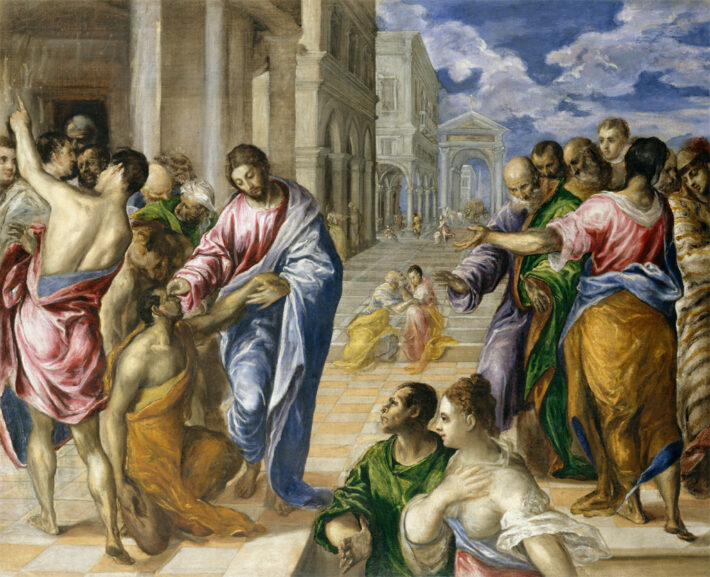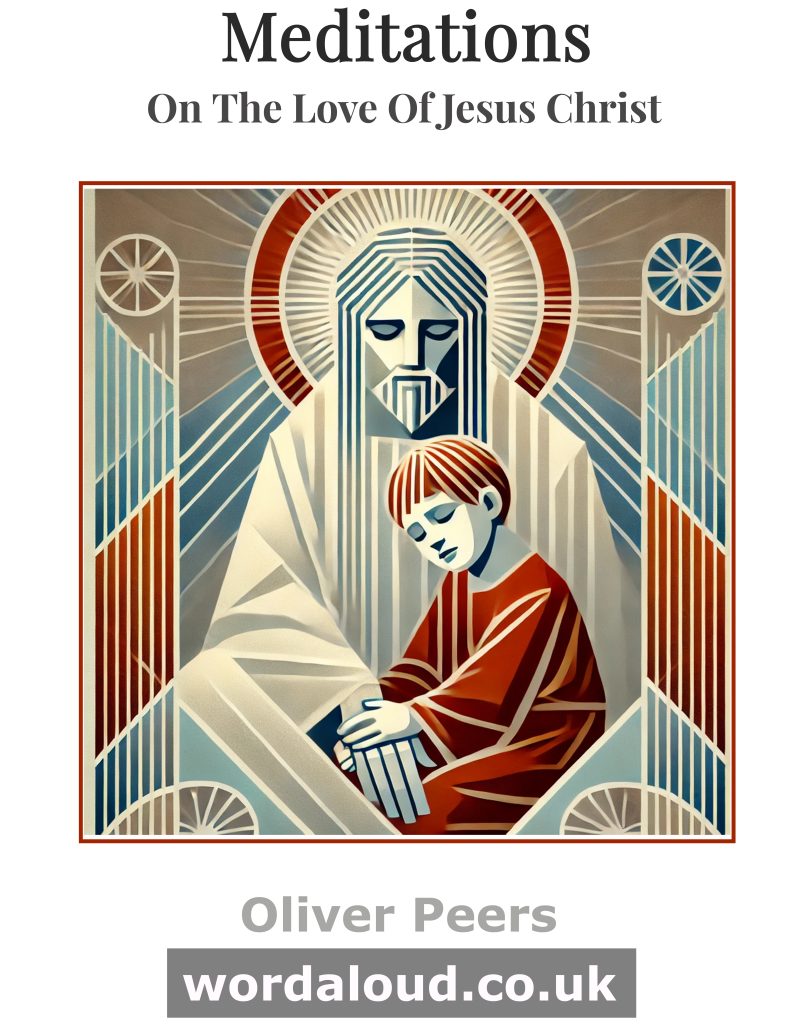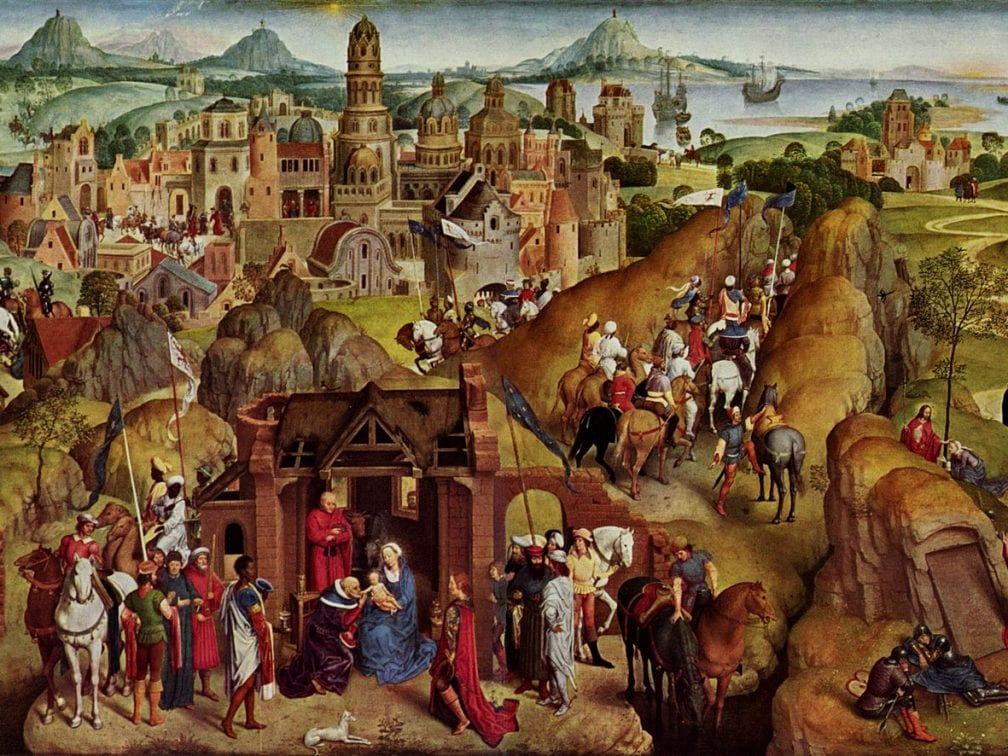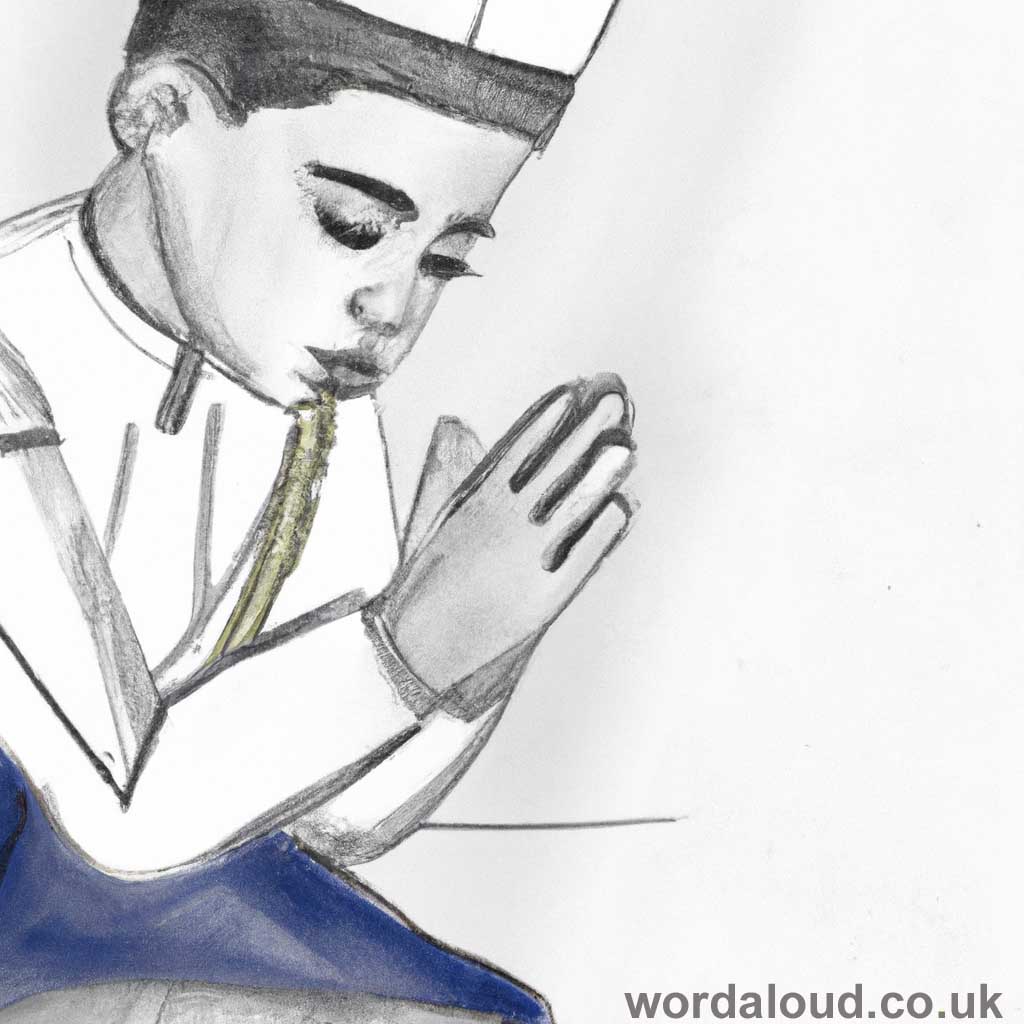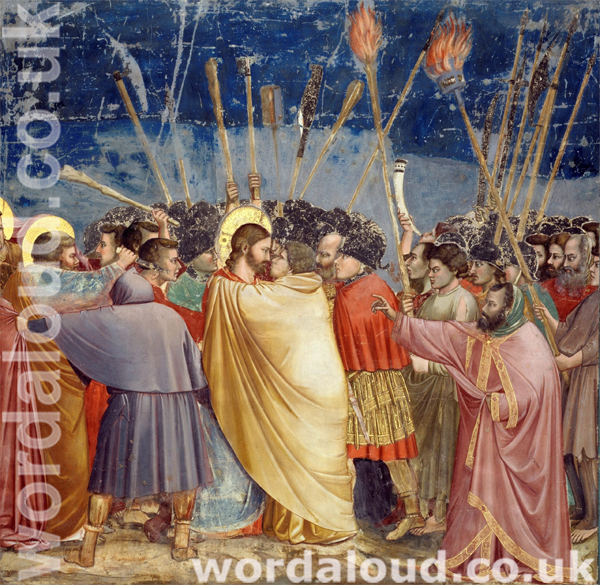Christian Art | The Leper Healed | Miracles Of God’s Mercy
Mark 1: 40-45 – 6th Sunday Year B and Week 1 Ordinary Time, Thursday (Audio Bible KJV)
40 And there came a leper to him, beseeching him, and kneeling down to him, and saying unto him, If thou wilt, thou canst make me clean.
41 And Jesus, moved with compassion, put forth his hand, and touched him, and saith unto him, I will; be thou clean.
42 And as soon as he had spoken, immediately the leprosy departed from him, and he was cleansed.
43 And he straitly charged him, and forthwith sent him away;
44 And saith unto him, See thou say nothing to any man: but go thy way, shew thyself to the priest, and offer for thy cleansing those things which Moses commanded, for a testimony unto them.
45 But he went out, and began to publish it much, and to blaze abroad the matter, insomuch that Jesus could no more openly enter into the city, but was without in desert places: and they came to him from every quarter.
As Jesus died on the cross he would have looked like a leper. He had been scourged. Front and back, his skin would have been a bloody mess of welts, cuts and bruises. Being himself without sin, he died in the image of some of those most abject whom he came to save. Truly the self-sacrifice of our Lord was complete and extreme.
In Biblical times, leprosy was a term broadly applied to a range of conditions, from eczema and psoriasis to leprosy proper, as we understand the term today. When afflicted with ‘leprosy’, in the broad sense of the word as used in the Bible, a person would be outcast. As according to the rules of the Book of Leviticus, the leper would be forced to live outside the camp; no-one could touch that person; he or she was outcast.
Leprosy then was both feared and shunned and was seen as a mark of sin. Should a person be healed of ‘leprosy’, meaning that his or her perhaps relatively minor skin condition had cleared, the rites of purification were then protracted and elaborate.
Such was the old law of the old covenant. Christ totally overwhelms this, the old law. His healing is immediate and through his word. He forgives and he heals in one breath and simultaneously: ‘I will: be thou clean.’ That is all it takes. The prescribed rituals and offerings which follow are additional and follow after Christ’s healing.
Jesus doesn’t want at this time to be known primarily as a worker of miracles, as one who miraculously heals the sick. His message is far more profound than this; it is a message of complete spiritual salvation. He tells the man he has cured to keep it a secret, but the man, understandably, cannot contain himself; he is compelled to spread the message of Christ’s healing, to the point where Christ is overwhelmed by the vast number of people who seek him craving a cure for their ills. It is very striking, especially as we consider the historical veracity of the Bible, particularly the Gospels, that the response of the people of Biblical times to the good news of Christ was overwhelming. Word of Christ spread like wildfire.
Christ forgives us our sins. His forgiveness is complete. He doesn’t even remember what we have confessed to him. That’s now over. There is no need, no point whatsoever, in dwelling on the past where our sins have been committed. Christ is with us here and now. We are forgiven. This is a powerful truth to grasp.
We do well, though, to carry with us a mental image of Christ who has so utterly humbled, indeed humiliated, himself on the cross that he resembles that leprosy which was then a mark of sin. That’s how much God loves us. May we never forget this core fact at the heart of our Christian belief.
In Biblical times, people did not touch lepers for fear of contagion, yet Jesus reached out and touched lepers. Let us approach the Lord now, realising that we need his healing touch. Many of us are afraid to touch other people. We give a few pennies to a beggar. Jesus didn’t stand off or keep his distance. He wasn’t afraid to touch others. He touched lepers, sinners, sick people, and even the dead. Physical contact is precisely what gives people, especially sick and wounded people, a sense of warmth and joy. By the very fact of touching another person, we accept that person exactly as he or she is. Lord, give us a warm heart and kind hands.
![]()

Audio Bible KJV | Endnotes
See That You Do Not Tell Anyone
Mark 1:40-45 recounts the story of Jesus healing a man with leprosy, and it ends with an unusual instruction from Jesus to the healed man: ‘See that thou say nothing to any man: but go thy way, shew thyself to the priest, and offer for thy cleansing those things which Moses commanded, for a testimony unto them.’ (Mark 1:44 KJV) This instruction seems paradoxical, as Jesus is instructing the man to not tell anyone about his healing, yet the healed man does the opposite, spreading the news far and wide.
To understand the meaning and significance of Jesus’ instruction, it is necessary to look at the context of the story. Leprosy was a highly contagious and feared disease in ancient times, and those afflicted with it were considered outcasts from society. This man with leprosy was desperate for healing and came to Jesus in faith, believing that Jesus had the power to heal him. Jesus was moved with compassion and reached out his hand to touch the man, saying: ‘I will; be thou clean.’ (Mark 1:41 KJV) In that moment, the man was healed of his leprosy, and he was free to rejoin society.
However, Jesus instructed the man to keep the healing a secret and to go to the priest to offer a sacrifice for his cleansing. This instruction was in accordance with the Mosaic Law, which required those who had been healed of leprosy to present themselves to the priest and offer sacrifices as a testimony of their healing (Leviticus 14:1-32). By following this procedure, the healed man would be able to re-enter society and resume his normal life without fear of being ostracized.
The reason for Jesus’ instruction to keep the healing a secret is not entirely clear, but there are several possible explanations. One is that Jesus did not want to draw too much attention to himself too soon, as he had a mission to accomplish and did not want to be distracted by crowds of people seeking healing. Another possible reason is that Jesus did not want to provoke the authorities, who might have seen his healing powers as a threat to their own authority.
Despite Jesus’ instruction to keep the healing a secret, the healed man could not contain his joy and went out and spread the news far and wide. This was not necessarily disobedience to Jesus, as he did not forbid the man from telling anyone about his healing after he had fulfilled the requirement of presenting himself to the priest. In fact, the man’s testimony was a powerful witness to the healing power of Jesus and helped to spread the news of his ministry even further.
Christian commentators have offered various interpretations of this passage. Some have seen Jesus’ instruction to keep the healing a secret as a sign of his humility and reluctance to draw attention to himself. Others have seen it as a strategic move on Jesus’ part to avoid being seen as a political threat. Still, others have seen it as a way of fulfilling the Mosaic Law and demonstrating Jesus’ adherence to Jewish tradition.
Saint Jerome sees Jesus’ instruction to keep the healing a secret as an example of his divine wisdom and understanding of human nature. According to Saint Jerome, Jesus knew that the man would not be able to keep the healing a secret, but he still gave him the instruction to test his faith and obedience. Saint Jerome also notes that the man’s disobedience in spreading the news of his healing did not negate the power of the miracle, but rather demonstrated the man’s gratitude and joy at being healed.
In Protestant theology, John Calvin sees Jesus’ instruction to keep the healing a secret as an example of his divine sovereignty and authority. According to Calvin, Jesus had a specific reason for instructing the healed man to keep the healing a secret, and his disobedience in spreading the news demonstrated a lack of faith and understanding of Jesus’ authority. Calvin also notes that the healed man’s disobedience could have led to unintended consequences, such as an overwhelming demand for healing that would have distracted Jesus from his mission.
Protestant commentator Matthew Henry sees Jesus’ instruction to keep the healing a secret as an example of his divine wisdom and foresight. According to Henry, Jesus knew that the healed man’s disobedience in spreading the news would actually further his mission and spread the good news of his healing power even more widely. Henry also notes that Jesus’ instruction to present himself to the priest and offer sacrifices demonstrated his respect for the Mosaic Law and his fulfillment of its requirements.
Christians continue to offer new insights into the meaning and significance of Jesus’ instruction to keep the healing a secret. Some have seen it as a way of emphasizing the importance of obedience to God’s commands, even when they may not make sense to us at the time. Others have seen it as a reminder of the power of testimony and the importance of sharing our stories of faith with others.
The story of Jesus healing the man with leprosy and Jesus’ instruction to keep the healing a secret speaks to the power of faith, obedience, and gratitude. The healed man’s testimony of Jesus’ healing power helped to spread the good news of his ministry, even if it was not in accordance with Jesus’ original instruction. We are reminded of the importance of following God’s commands, even when they may not make sense to us, and of the power of sharing our stories of faith with others.

